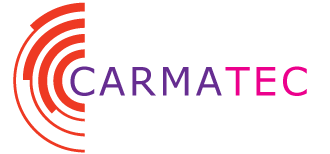In the ever-evolving landscape of mobile development, businesses are faced with the decision of choosing between Progressive Web Apps (PWAs) and Native Apps to deliver optimal user experiences. As we navigate through 2024, it’s crucial for businesses to understand the strengths and limitations of each approach to make an informed decision. In this blog post, we’ll explore the differences between PWAs and Native Apps and help you determine which option is best suited for your needs.
What are Progressive Web Apps?
Progressive Web Apps (PWAs) are web applications that leverage modern web technologies to provide app-like experiences to users. PWAs combine the best features of web and mobile apps, offering the reach of the web with the capabilities of native mobile apps. They are designed to be fast, reliable, and engaging, regardless of the device or browser used.
Key characteristics of Progressive Web Apps include:
Responsive Design:
PWAs are built with responsive design principles, ensuring that they adapt seamlessly to different screen sizes and orientations. This allows users to access PWAs across a wide range of devices, including smartphones, tablets, and desktops.
Progressive Enhancement:
PWAs are built with progressive enhancement in mind, meaning that they work for all users, regardless of their browser or device capabilities. They can deliver basic functionality to all users and progressively enhance the experience for those with more advanced browsers and devices.
App-Like Experience:
PWAs provide an app-like experience to users, including features such as smooth animations, offline capabilities, push notifications, and home screen installation. This helps to engage users and keep them coming back to the PWA.
Service Workers:
Service workers are a key technology used in PWAs to enable features such as offline caching and background synchronization. Service workers run in the background and can intercept network requests, allowing PWAs to cache resources and provide offline functionality.
Secure Connections:
PWAs are served over HTTPS to ensure that data transmitted between the user’s device and the server is encrypted and secure. This helps to protect user privacy and prevent unauthorized access to sensitive information.
Discoverability:
PWAs can be discovered and accessed through web browsers, search engines, and social media platforms, making them easily accessible to users. They do not require installation from an app store, which can improve discoverability and reduce friction for users.
Understanding Progressive Web Apps (PWAs) and Native Apps
Progressive Web Apps (PWAs) are web applications that leverage modern web technologies to deliver app-like experiences across devices. PWAs are designed to be fast, reliable, and engaging, offering features such as offline capabilities, push notifications, and home screen installation. They are accessible via web browsers and do not require installation from an app store.
On the other hand, Native Apps are applications built specifically for a particular platform, such as iOS or Android, using platform-specific languages and frameworks (e.g., Swift for iOS, Java/Kotlin for Android). Native Apps are typically downloaded and installed from app stores and have access to device-specific features and functionalities.
What is the difference between PWAs and Native Apps?
Development Time and Cost:
PWAs generally require less development time and cost compared to Native Apps, as they can be developed using web technologies (HTML, CSS, JavaScript) and shared across multiple platforms. Native Apps, on the other hand, require separate development efforts for each platform, leading to higher development costs and longer time to market.
Performance and User Experience:
Native Apps often provide better performance and user experience compared to PWAs, as they have access to device-specific features and can leverage platform-specific optimizations. Native Apps can offer smoother animations, faster load times, and seamless integration with device hardware (e.g., camera, GPS), leading to a more immersive user experience.
Offline Capabilities:
PWAs excel in providing offline capabilities, allowing users to access content and perform tasks even when they are offline or have a poor internet connection. Native Apps can also support offline functionality, but they may require additional development effort to implement offline caching and data synchronization.
Distribution and Discoverability:
Native Apps are distributed through app stores (e.g., Apple App Store, Google Play Store), making them easily discoverable by users. PWAs, on the other hand, rely on web browsers for distribution and may require additional marketing efforts to drive traffic and encourage users to install them on their home screens.
Updates and Maintenance:
PWAs offer seamless updates, as they are hosted on web servers and can be updated instantly without requiring user intervention. Native Apps, however, may require users to manually update them through app stores, leading to delays in delivering new features and bug fixes.
Choosing the Right Approach
When deciding between PWAs and Native Apps in 2024, it’s essential to consider your specific requirements, budget, target audience, and long-term goals. Here are some key considerations to help you make the right choice:
When Should You Consider Progressive or Native App?
Determining whether to develop a Progressive Web App (PWA) or a Native App depends on various factors, including your project requirements, target audience, budget, and long-term goals. Here are some scenarios where you might consider each approach:
Consider Progressive Web Apps (PWAs) when:
Cross-Platform Compatibility: If you need your app to run on multiple platforms (e.g., iOS, Android, desktop), PWAs offer a cost-effective solution since they can be accessed via web browsers on any device without the need for platform-specific development.
Fast Development and Deployment: PWAs can be developed faster than Native Apps, as they leverage web technologies (HTML, CSS, JavaScript) and can be deployed instantly without going through app stores. If you need to launch your app quickly or iterate on features rapidly, PWAs may be the way to go.
Reach and Accessibility: PWAs are accessible to users with a web browser, making them easy to discover and access via search engines, social media, and shared links. If you want to reach a broad audience without relying on app store downloads, PWAs offer greater accessibility.
Offline Functionality: PWAs can provide offline capabilities, allowing users to access content and perform tasks even when they are offline or have a poor internet connection. If offline functionality is essential for your app, PWAs offer a viable solution through service workers and caching mechanisms.
Budget Constraints: PWAs typically require lower development costs compared to Native Apps, as they can be developed using web technologies and shared across multiple platforms. If you have budget constraints or limited resources, PWAs offer a cost-effective option for delivering app-like experiences to users.
Consider Native Apps when:
Optimal Performance: If you require high performance, smooth animations, and access to device-specific features (e.g., camera, GPS, sensors), Native Apps offer superior performance compared to PWAs. Native Apps are built specifically for a particular platform (e.g., iOS, Android) using platform-specific languages and frameworks, allowing for optimized performance and seamless integration with device hardware.
Rich User Experience: If you prioritize delivering a rich, immersive user experience with polished UI/UX design, Native Apps offer greater flexibility and customization options compared to PWAs. Native Apps can take advantage of platform-specific design guidelines and UI components to create visually appealing interfaces that align with user expectations.
Access to App Store Ecosystem: If you want to leverage the app store ecosystem for distribution, monetization, and user acquisition, Native Apps provide access to app stores such as the Apple App Store and Google Play Store. Being listed on app stores can improve discoverability, credibility, and trust among users.
Integration with Device Features: If your app requires deep integration with device features and functionalities (e.g., push notifications, biometric authentication, AR/VR capabilities), Native Apps offer direct access to platform APIs and native SDKs, enabling seamless integration with device hardware and software.
Offline Functionality with Complex Data: If your app needs to handle complex offline scenarios or requires extensive data synchronization and storage capabilities, Native Apps offer greater flexibility and control over data management compared to PWAs. Native development allows for custom solutions tailored to specific offline use cases and data requirements.
What are the Pros of a PWA?
Progressive Web Apps (PWAs) offer several advantages that make them an attractive choice for businesses and developers. Here are some key pros of PWAs:
Cross-Platform Compatibility:
PWAs can run on any device with a modern web browser, including smartphones, tablets, desktops, and even smart TVs. This cross-platform compatibility eliminates the need to develop separate versions of the app for different platforms, reducing development time and costs.
No Installation Required:
Unlike Native Apps, PWAs do not require installation from an app store. Users can simply access the PWA through a web browser, bookmark it, and add it to their home screen if desired. This frictionless installation process increases accessibility and encourages user adoption.
Fast and Responsive:
PWAs are designed to be fast and responsive, delivering a smooth and seamless user experience. They leverage modern web technologies, such as service workers and caching, to ensure fast loading times and smooth performance, even on slow or unreliable networks.
Offline Functionality:
PWAs can work offline or with limited connectivity, thanks to features like service workers and caching. This allows users to continue using the app and accessing content even when they are offline or have a poor internet connection. Offline functionality enhances user engagement and satisfaction, especially in areas with intermittent internet access.
Improved Discoverability:
PWAs are discoverable through search engines, social media, and shared links, making them easier to find and access compared to Native Apps. This improved discoverability can help attract new users and drive traffic to the app without relying solely on app store listings.
Lower Development Costs:
Developing a PWA typically requires less time, effort, and resources compared to building separate Native Apps for different platforms. Since PWAs use web technologies that are familiar to many developers, development costs are often lower, making PWAs a cost-effective option for businesses with budget constraints.
Automatic Updates:
PWAs can be updated automatically without requiring user intervention. Whenever the user accesses the PWA through the web browser, they will automatically receive the latest version of the app. This ensures that users always have access to the most up-to-date features and improvements without having to manually update the app.
Security:
PWAs are served over HTTPS, ensuring that data transmitted between the user’s device and the server is encrypted and secure. This helps protect user privacy and sensitive information, providing a secure environment for users to interact with the app.
Conclusion
Ultimately, the decision to choose between a Progressive Web App (PWA) and a Native App depends on your project goals, technical requirements, and budget considerations. By carefully evaluating the pros and cons of each approach and understanding your audience’s needs, you can make an informed decision that aligns with your business objectives and delivers value to your users. For more information connect with Carmatec.












